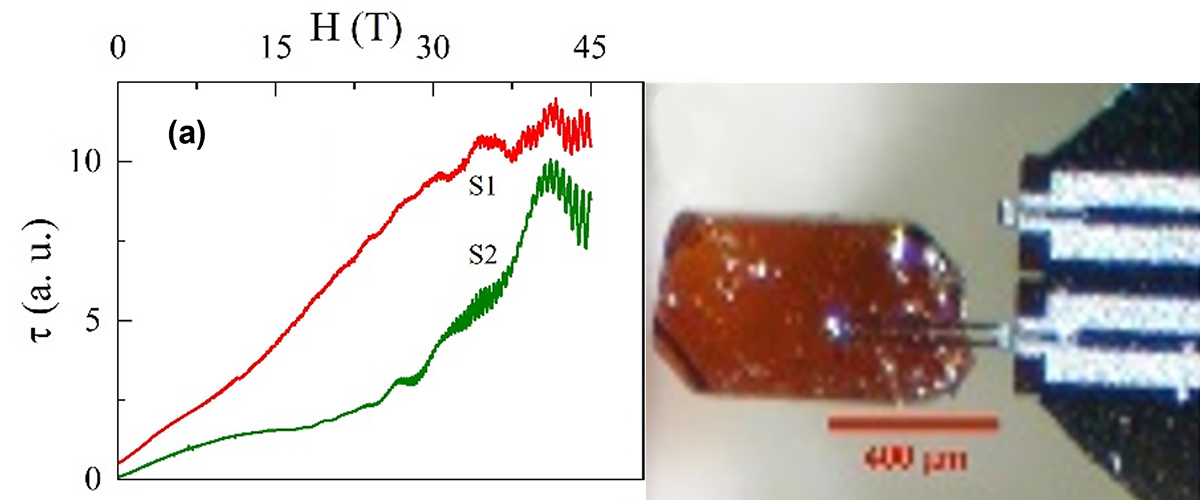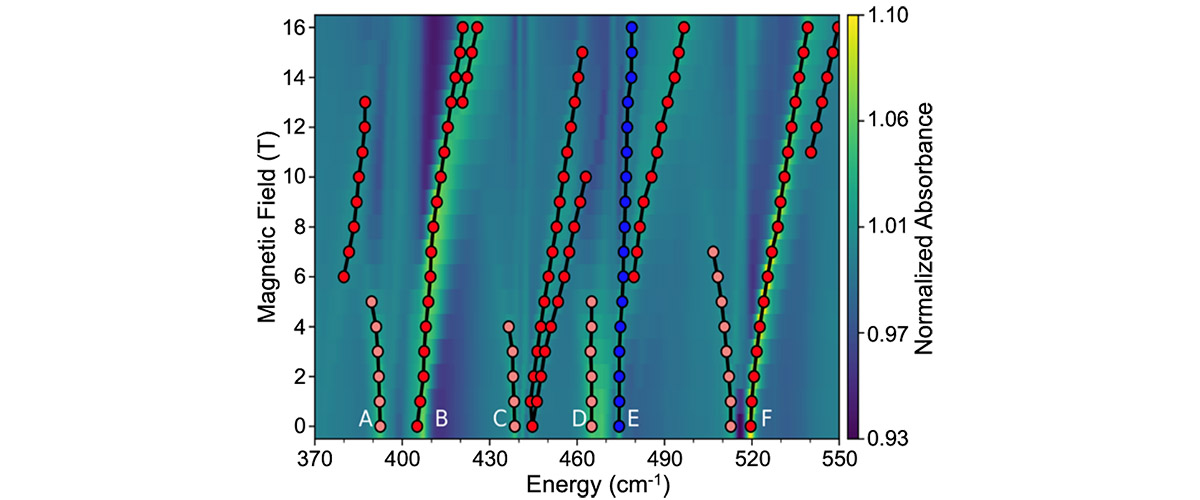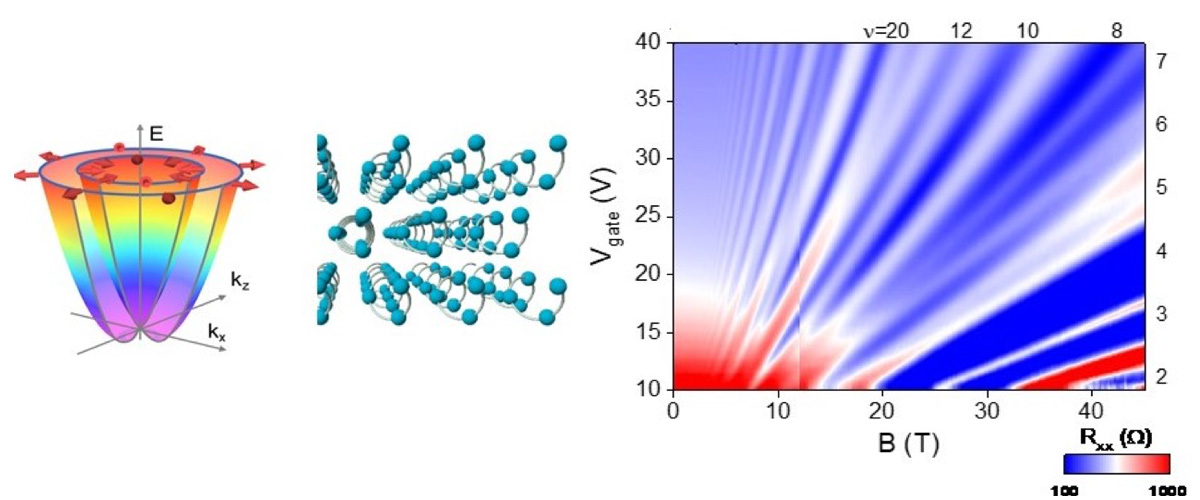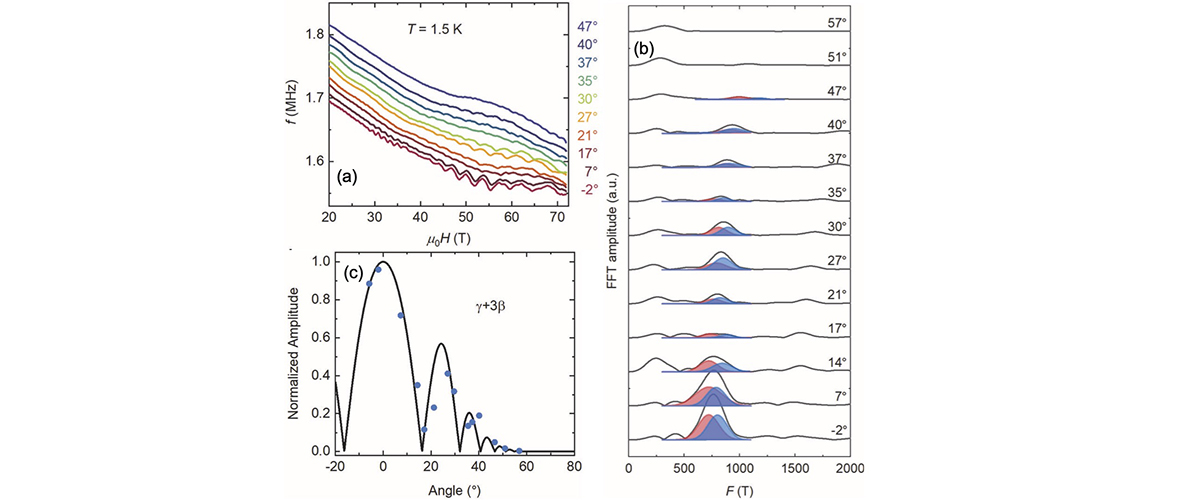What did scientists discover?
The application of extremely high DC magnetic fields up to 45T allowed the observation of many quantum oscillation frequencies in the magnetization of KV3Sb5 that had not been observed previously. In addition, researchers could track the angular variation of most of the frequencies to unambiguously confirm the quasi-2D nature of the Fermi surface Berry phase calculations, obtained by constructing the Landau level fan diagram, confirmed the non-trivial band topology in KV3Sb5. Furthermore, calculations show that the Fermi surface undergoes severe reconstruction due to charge density wave ordering in KV3Sb5 and frequency values calculated from theory are consistent with the experimental results.
Why is this important?
Topological materials possess charge carriers with a much higher mobility than is found in normal conductors. Fully understanding their electronic properties is crucial to the design and development of electronic devices utilizing these materials. The detailed knowledge of the Fermi surface obtained through this research will improve our understanding of the fundamental physics of the non-trivial topology, charge density wave, and superconductivity in KV3Sb5.
Who did the research?
K. Shrestha1, M. Shi2, B. Regmi3, T. Nguyen1, D. Miertschin1,K. Fan2, L. Z. Deng4, N. Aryal5, S.-G. Kim3, D. E. Graf6,7, X. Chen2 and C. W. Chu 4,8
1West Texas A&M University (WTAMU); 2University of Science & Technology of China; 3Mississippi State University; 4University of Houston; 5Brookhaven National Lab; 6Florida State University; 7National MagLab; 8Lawrence Berkeley National Lab
Why did they need the MagLab?
To observe the quantum oscillations needed to map the Fermi surface of this material, it is necessary to cool the sample to temperatures as low as 0.32K and apply very high magnetic fields (well above 20T). Indeed, the 45T hybrid magnet exponentially amplifies these quantum oscillations. It is only available at the MagLab and is readily accessible through the MagLab’s user program.
Details for scientists
- View or download the expert-level Science Highlight, Nontrivial topology in a kagome superconductor (KV3Sb5) probed by torque magnetometry up to 45T
- Read the full-length publication, High quantum oscillation frequencies and nontrivial topology in kagome superconductor KV3Sb5 probed by torque magnetometry up to 45 T, in Physical Review B
Funding
This research was funded by the following grants: K. Shrestha, T. Nguyen, D. Miertschin (Killgore Research Center at WTAMU, Welch #AE-0025); G.S. Boebinger (NSF DMR-2128556)
For more information, contact Tim Murphy.






